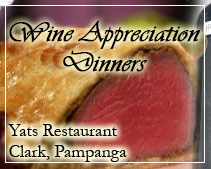Indisputably, one of modern France’s greatest treasures is its rich cuisine
January 21, 2011
Indisputably, one of modern France’s greatest treasures is its rich cuisine. The French have an ongoing love affair with food, and their reverence for time spent eating is evident in any culinary establishment nationwide. It is also manifested in the traditional family gatherings around the home dinner table, particularly the Sunday mid-day feast which is prepared lovingly over many hours and consumed leisurely through a bevy of appetizers and main courses, usually accompanied by a number of wines and often lively discussion which tends to center on political topics.
What is perhaps less widely recognized is that France’s reputation for fine food is not so much based on long-held traditions but on constant change. In fact, the general expectation of good eating is a relatively new experience for the French. At the time the Bastille was stormed in 1789, at least 80% of the French population were subsistence farmers, with bread and cereals as the basis of their diet, essentially unchanged since the time of the ancient Gauls nearly two millenia before. In the mid-nineteenth century, following the demise of the aristocracy, food was a conspicuous symbol of social position, swiftly adopted by a new ruling class of bourgeoisie, who recreated the sumptuous meals of the very aristocracy they had once criticized. At the same time, two-thirds of Parisians were either starving or ill-fed, five times more likely to be nourished from vegetable proteins than from any meats or dairy products. The golden age of haute cuisine benefited only those at the very top of the social ladder.
It took a world war at the beginning of the twentieth century to halt the gross inequality of wealth at the table, and to bring about a more even distribution of the nation’s produce. The advent of improved transportation, especially by train, brought culinary revolution to the regions, and slowly the spreading affluence could put a chicken on every peasant’s table. Eventually, tourism fanned the flames of change in France’s commercial kitchens, as chefs were obliged to create dishes appealing to an ever-widening audience of British, Japanese, Middle Easterners, and Americans, as well as French travelers hungering for new experiences. In some instances the reasons for change in regional products were a pragmatic reaction to a decline in other industries (such a silk) or to the economic disaster brought about by the Phylloxera pest, which wiped out most of France’s grape vines at the turn of the century.
________________________________________
The “French Paradox”
It is well-known that the stereotypical French meal is heavy in saturated fats; heavy creams and butter are a staple in many dishes. Despite this fact, the French populace suffers from lower incidences of cardiac disease than many other western nations, including the U.S. Much research and medical opinion seems to credit their consumption of red wines with an overall reduction in cholesterol levels (see “The French Paradox”). Whatever creedence one might place in this theory, it is a given that all French food is best accompanied by wine to be enjoyed to its fullest.
________________________________________
Cheese Tips & Trivia
β’ The golden rule for cutting cheese: each person should get his or her share of the center of the cheese…and of the rind.
β’ Since it is the least cold, the vegetable drawer in your refrigerator is the best place to store cheese. Keep cheese in its original wrapping or cover it with aluminum foil or plastic wrap.
β’ The French eat more cheese than any other nation in the world – an amazing total of 20.4 kg (45 lbs.) per person per year. 400 different kinds of cheese are made in France.
β’ Some goats’ milk cheeses are sprinkled with charcoal ash. This gives them an ash-grey color and is intended to absorb surface moisture, thus helping to preserve them.
Source: http://www.discoverfrance.net/France/Food/DF_cuisine.shtml
If this article about Clark is useful to you, please click here to contact us to tell us what more you wish to know about this article or Clark Philippines, which can be something about Clark investment, about Clark resorts, about Clark Swimming and Leisure or simply general news about Clark.
Please send questions to Editor@ClarkPhilippines.com. Leave your name, email address, contact numbers and we will get back to you as soon as possible. Information received will not be disclosed.













